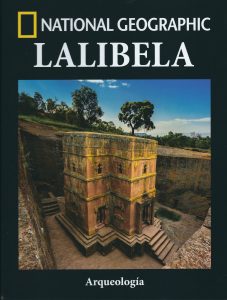
May 25 is Africa Day, perhaps one of the most significant dates for those of us dedicated to studying this vast continent. However, few people know that what is commemorated is an event of great importance: the establishment of the Organization of African Unity (OAU), an institution that, in 2002, was transformed into the African Union.
The Origins
The surge of newly independent African countries in the early 1960s brought some of the hopes of Pan-Africanist movements back to the fore. Under the premise of an artificial and utopian unity among African states, a few experiments were attempted in the western part of the continent, though they ultimately failed — such as the Mali Federation, which brought together Senegal and Mali between 1959 and 1960, or the Union of African States, a temporary alliance between Guinea, Ghana, and Mali between 1958 and 1961 (with Mali joining in 1960). The weak sense of identification among the various ethnic groups inhabiting these new postcolonial states, combined with the mutual distrust of the different elites in the main capitals, quickly rendered these projects worthless.
After these failures, tensions arose among Pan-Africanists about what course to take, resulting in the emergence of two opposing factions: while the Casablanca Group, led by the charismatic Ghanaian Kwame Nkrumah, advocated for the creation of a federation of states encompassing the entire African continent, the Monrovia Group, headed by Senegalese leader Léopold Sédar Senghor, proposed economic cooperation between states, which might eventually pave the way for some form of political collaboration.
The Impulse of Haile Selassie
At the time, Haile Selassie, Emperor of Ethiopia, had no intention of participating in grand federations of states; in fact, he had not the slightest intention of ceding even a fraction of his power to any supranational institution. Nevertheless, he recognized the potential benefits that an association of African states could bring, especially in a world divided into opposing blocs — communists versus capitalists — where the fragile new countries could barely hold their own.

Africa Hall, headquarters of the OAU.
Thus, in May 1963, he invited both blocs to meet in Addis Ababa to engage in dialogue and find common ground from which to begin working together. The 32 African heads of state agreed to establish the Organization of African Unity, which was officially founded on May 25, 1963. In the Charter of this new organization — whose headquarters were established in the Ethiopian capital as a tribute to its fierce defense of independence against colonialism — the objectives were set out, including promoting unity and solidarity among African states, eradicating colonialism, guaranteeing the sovereignty and territorial integrity of member states, coordinating efforts to improve the living standards of citizens, and promoting the defense of human rights.
Alongside the Charter, a structure was created with a Secretary-General at its head. There was an Assembly of Heads of State, which determined the main policies to be pursued, and a Council of Ministers, made up of the foreign ministers of all the member states.
The OAU was born without fully satisfying either of the two Pan-Africanist blocs. Moreover, throughout its existence, it was weakened by the limited commitment of many of its member states, although it was successful in ridding most of the African continent of colonialism and encouraging the creation of various supranational economic cooperation organizations such as ECOWAS. Thanks to the drive of Libyan leader Muammar Gaddafi, in 2002, 54 African countries agreed to create the African Union — the logical evolution of the OAU — which also established its headquarters in Addis Ababa. Although the new organization was founded on July 9, it chose to retain May 25 as Africa Day.

The new headquarters of the African Union in Addis Ababa
References
- Murithi, Tim. (2005). The African Union: Pan-Africanism, Peacebuilding and Development. Ashgate.
- Tieku, Thomas Kwasi. (2014). The African Union. Routledge.
- Adejo, Armstrong M. (2001). “From OAU to AU: New Wine in Old Bottles?” African Journal of International Affairs, 4(1–2), 119–141.




 https://orcid.org/0000-0003-2855-3195
https://orcid.org/0000-0003-2855-3195
Deja una respuesta